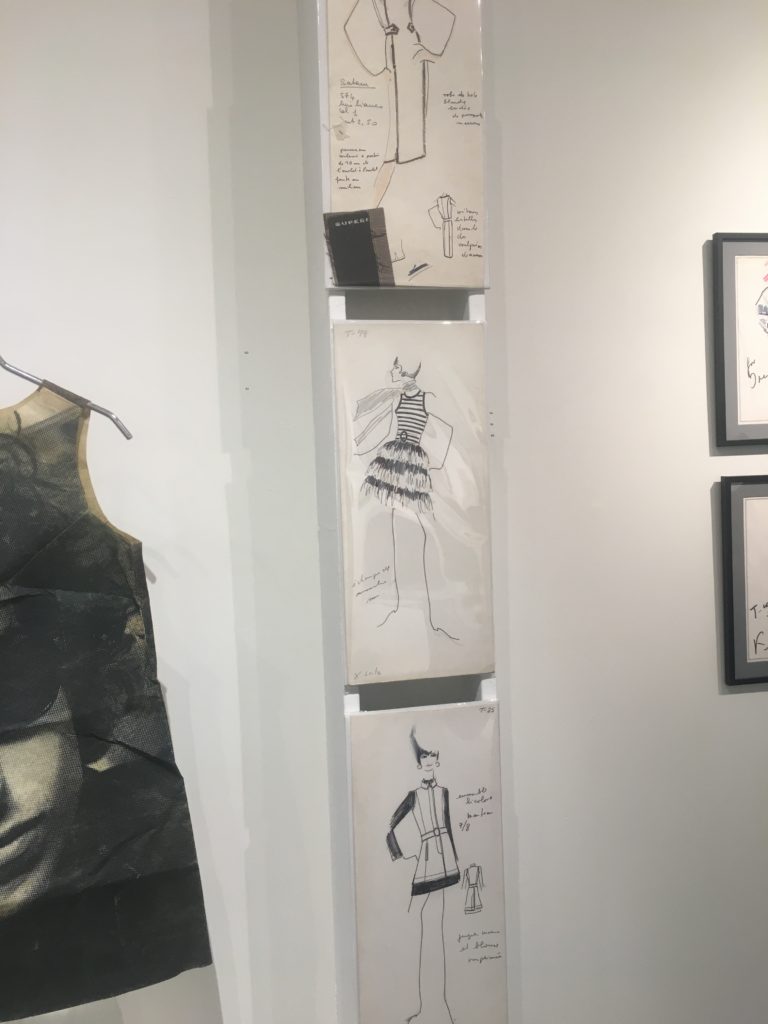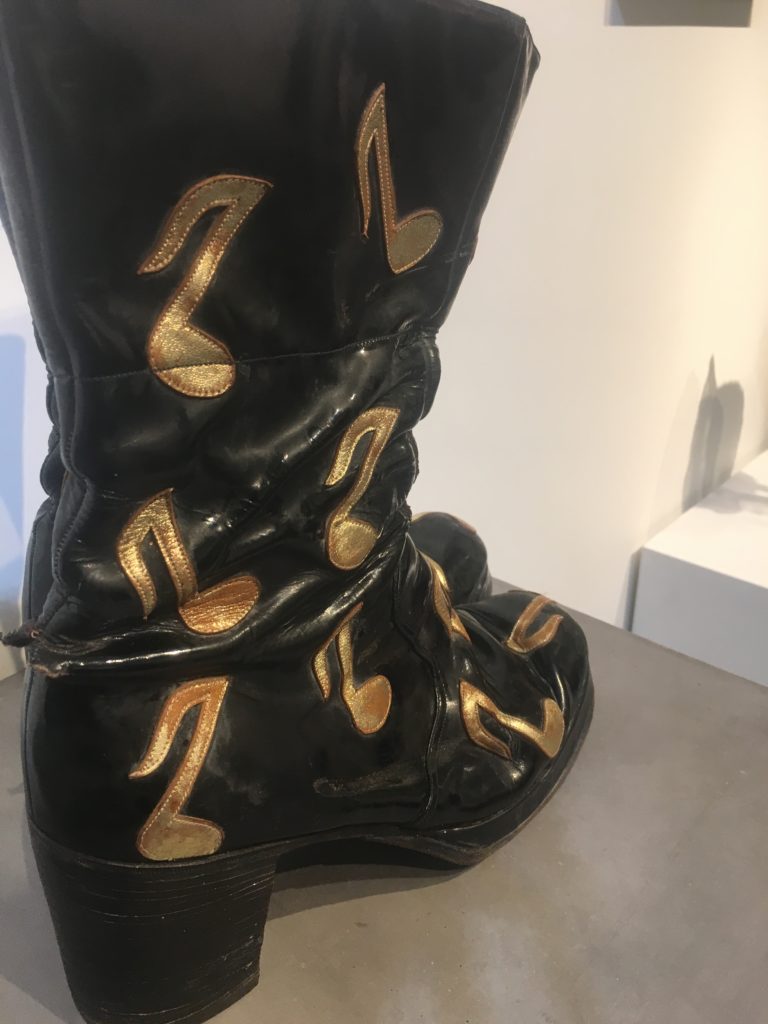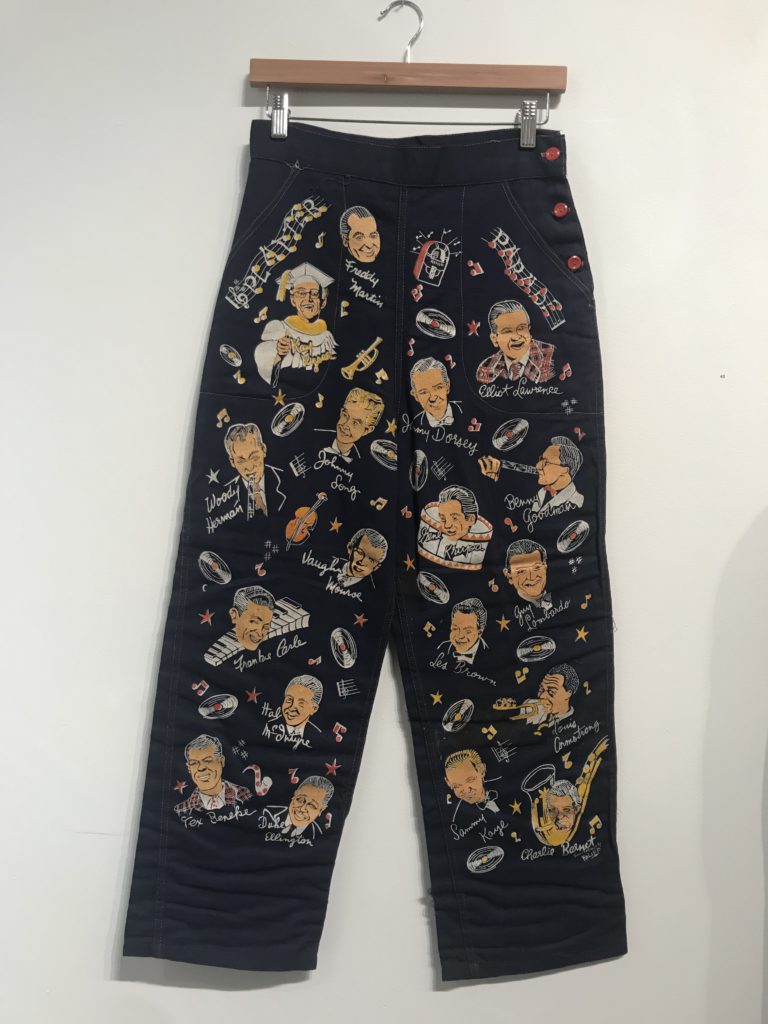 In the two-years-old, 200-square-foot space of Kabinett Gallery, is a display of what is currently the Boston art gallery scene’s slightly best-kept secret. And slightly is used only because Kabinett isn’t necessarily underground. As a part of the South End’s SoWa district, on a weekday or busier weekend, their door is wide open, inviting you to feast your eyes upon some unbeknownst art.
In the two-years-old, 200-square-foot space of Kabinett Gallery, is a display of what is currently the Boston art gallery scene’s slightly best-kept secret. And slightly is used only because Kabinett isn’t necessarily underground. As a part of the South End’s SoWa district, on a weekday or busier weekend, their door is wide open, inviting you to feast your eyes upon some unbeknownst art.
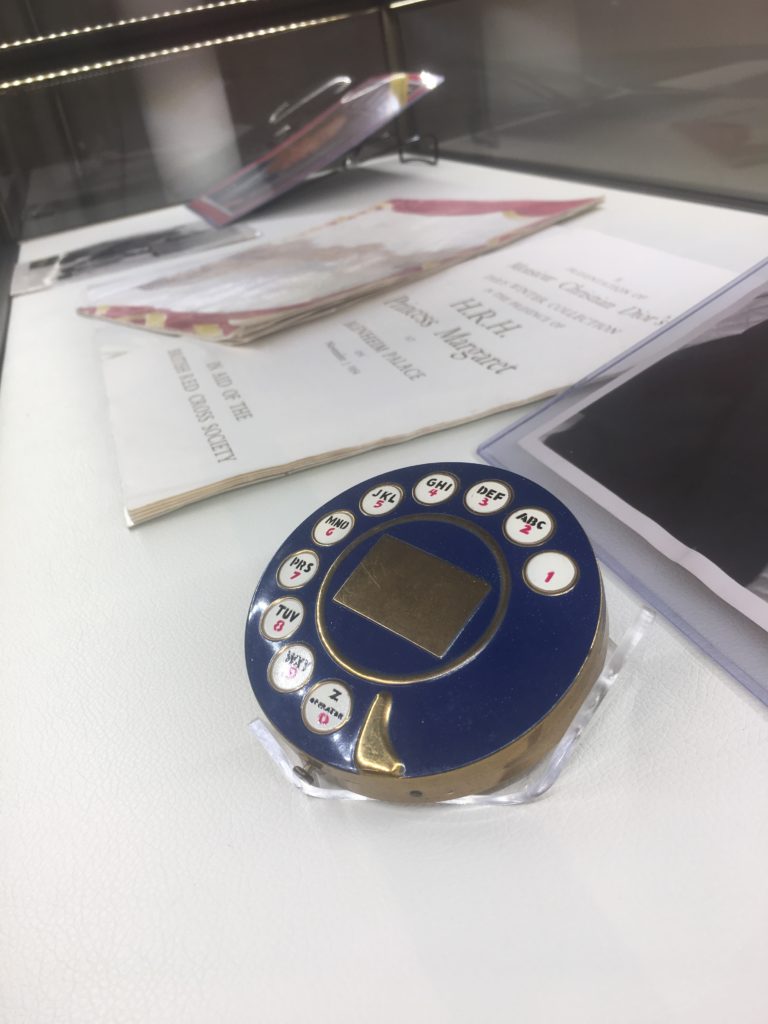

Still, an under the radar vibe proceeded on Friday, September 7, when their latest exhibit “Fashion Forward” was revealed. The name feels a tad basic for contents that are anything but. What was introduced during the opening reception were rarely seen and unique artifacts and ephemera in the form of fashion illustrations for couture houses; the accessories of designers and entertainers (Elsa Schiaparelli’s telephone dial powder compact, designed by Salvador Dali; bow ties of the King Cole Trio); apparel from the counterculture era (paper dresses; a fantastic metal belt by Paco Rabanne); archival mixed media; autographed postcards and letters; books; an outfit once worn by Duke Ellington (a mohair tuxedo) and Mister Rogers’ tie (that he donated for a charity event); and a selected four pieces of artworks by a sculptor and designer of the now.
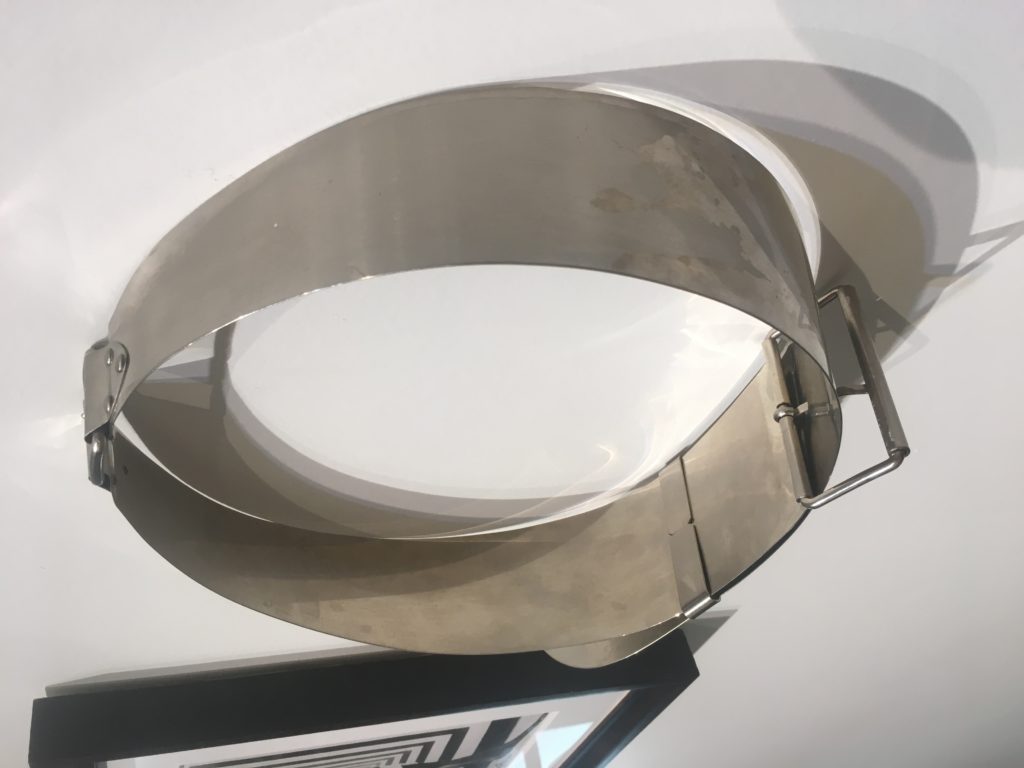
In their own words, Kabinett honors their exhibition, present until November 17, as a “wide-ranging and exuberant celebration of the fashion arts.”
How did this small gallery acquire such amazing and historically significant items?
Kabinett owner Gabriel Boyers, who was a proud, gregarious host to a mixed crowd of the style inclined and casual SoWa wanderers that Friday night, shared that “Many of the pieces of the show are from the collection of June Weir. An editor of Mirabella, Harper’s Bazaar, and Women’s Wear Daily. A major force in fashion from the 1970s through the 1990s. A lot of the drawings, the Marc Bohan drawings, are from her collection.”
When asked which pieces undeniably captured his wonderment–though truthfully, every piece is a gem–he was able to select the ones he treasured for their development and backstory.
“There’s so much in this show to be excited about,” he began, and motioned towards the middle of the room where in a rectangular column, three pinafore baby doll dresses, entirely made of nylon mesh and metal screws, were showcased and created by Patrice Yourdon. “The screws are so wild. The dresses weigh about 50 pounds. They’re no joke!” The screws are analogous to a porcupine’s skin and with their recognizable shape evoke the eerie charm of the kind of vintage dolls with bizarre grins and blank stares. “I think her works are extraordinary and I’m so happy to include them.”
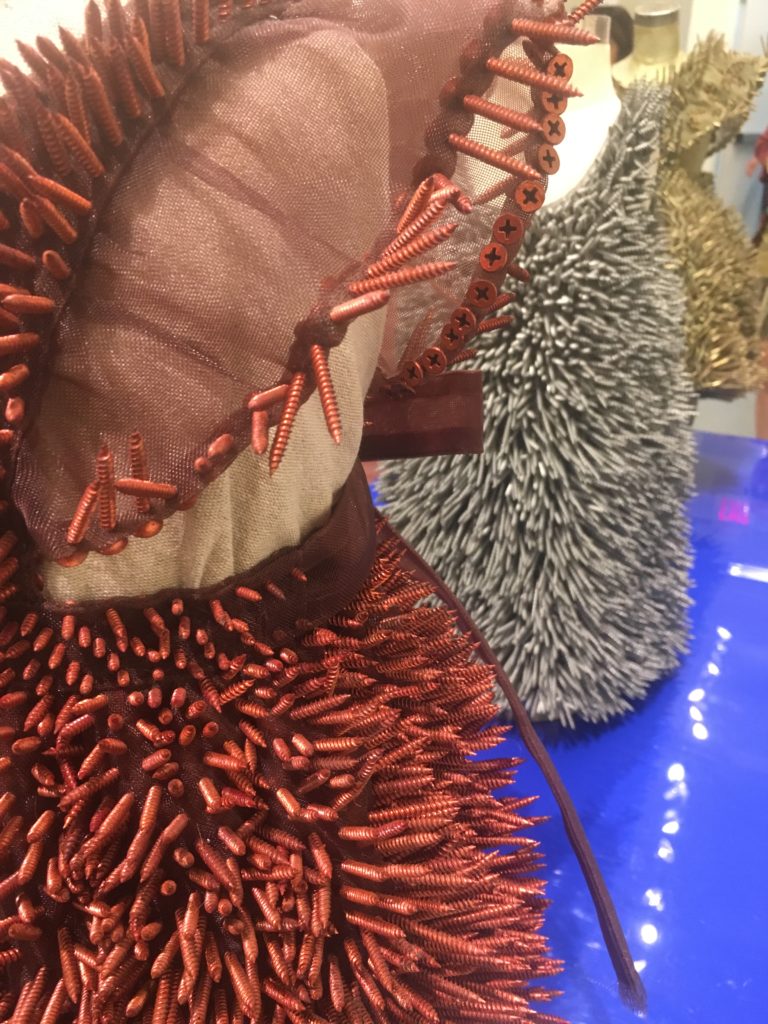
Another favorite of Boyers are original illustrations drawn by the renowned designer, and advocate for diversity on the runway (decades before it was the buzz move to do), Yves Saint Laurent.
Near Kabinett’s entrance, Saint Laurent’s delightful work took up an entire wall. The Algerian-born, Paris-educated talent drew his women figures as if from recent memory. Snapshots of when they were strolling down the street, only this time in YSL attire, such as a woman in a grey (pencil) skirt suit, grey stockings, black heels, and a yellow boater hat. Ten of his illustrations were a nod to the trend of pronounced androgyny, or at least the power suit of the 1980s, in womenswear, and were meant for a magazine feature that never made it to final submission.
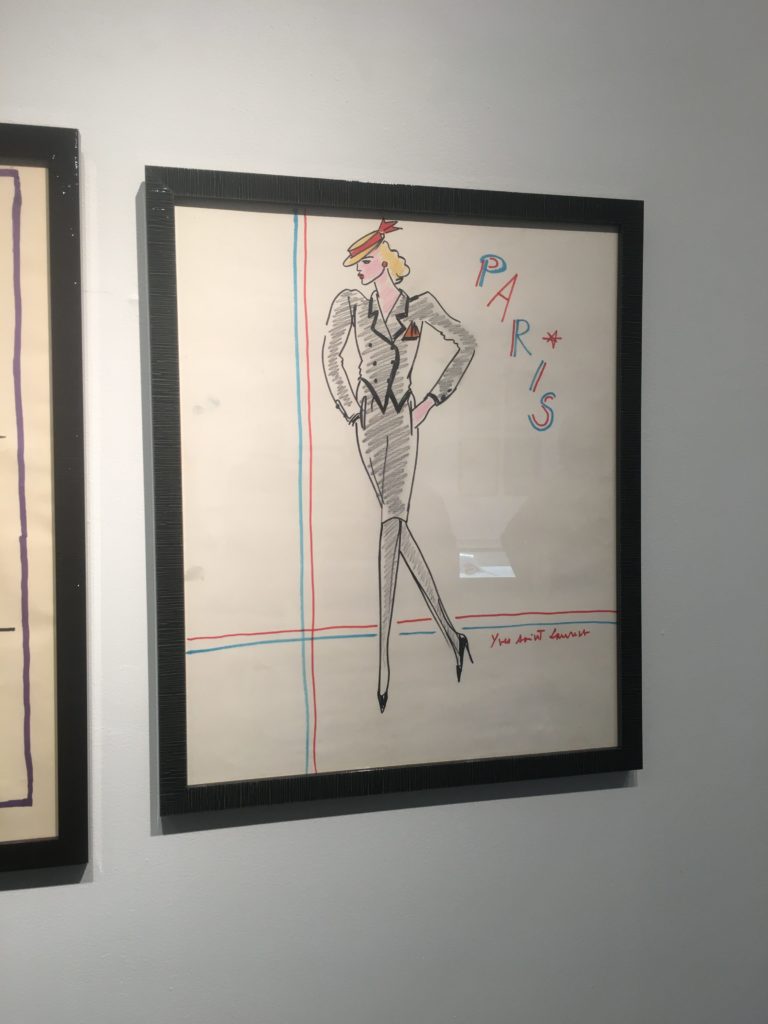
“These were for a feature that June Weir was commissioning for Mirabella. It was [representative] of a moment in which women were entering the workforce in the early ‘80s, in a new way,” Boyers explained.“She said to Yves Saint Laurent, ‘A lot of these young, single women need to know about professional wear. But it’s very expensive! How would you show how to buy a few staple pieces and change an outfit from day to day, with the addition of accessories? That’s what these drawings are about. It really speaks to the cultural shift that was going on.”
As Saint Laurent’s illustrations are glamorous and promote a chic kind of sex appeal, a wall away are Karl Lagerfeld’s, and his illustrations are unabashedly aggressive. Saint Laurent drew on the side of timelessness. Lagerfeld’s fashion illustrations were loud and formidable. Seemingly anyway, as one illustration from 1985 for Chanel, features a woman in an over-sized silvery-lilac coat with gold buttons. If you ever seen a Lagerfeld-led collection, which many of us have since he’s been at the helm of Chanel for 35 years, this is actually classic Lagerfeld.
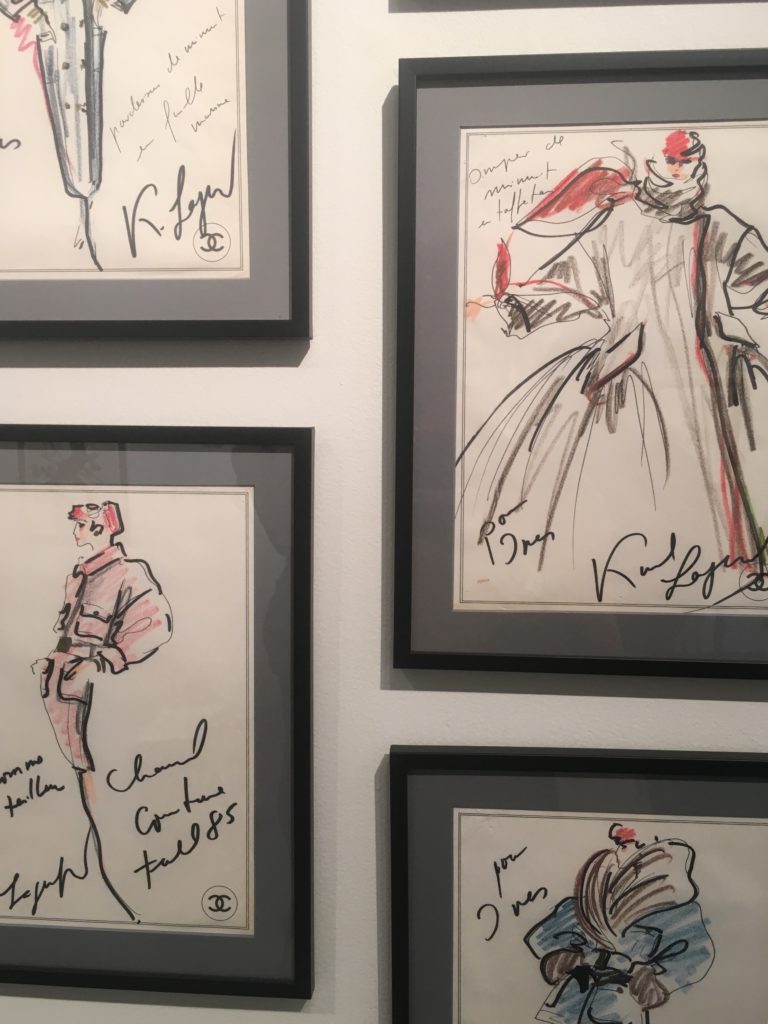
Other illustrations on deck were produced for the playful and underrated house of Emanuel Ungaro, and for Givenchy, the discernment for detail was exquisite. For the Spring/Summer 1997 collection, and Alexander McQueen’s first show as chief designer, McQueen’s three illustrations hang on the wall between Lagerfeld and Saint Laurent. The gold used to color in parts of a regal cape, bolero, and shoes, were infused with shimmer and will remind some Kabinett visitors of the gelly roll pens of their elementary school stationary kits. The illustrations themselves are a heartrending reminder of McQueen’s rebellious and visionary take on fashion design.
The actual fashion pieces in “Fashion Forward” are few, in mint condition, and one will absolutely hearten anyone that has ever admired the entertainer extraordinaire and legend in dance, Josephine Baker. In all its glory, forty-five years later, is a patterned and clementine orange cape and gown Baker wore to the 1973 Cannes Film Festival, accompanied by a photograph of her in it.
Boyers raved about it.

“I’ve had a longstanding preoccupation and interest in Josephine Baker. When there was an opportunity to acquire this dress, I thought, ‘This is so amazing.’ And then with the picture of her wearing it, we decided to build a little section with Baker stuff around that. Including…,” walking towards a yellow placard advertising an event she performed at in Buffalo, NY, 1951, “…this kooky thing describing her fabulous $150,000 wardrobe!”
A truly, unintentionally hilarious and campy blast from the past, the ad heralded her ostentatious costumes designed by Christian Dior, Balenciaga, and Rochas among others. The ad also uncloaked the fetishizing of Baker’s black womanhood with the following preface: “The Toast of Three Continents, Josephine Baker, The Provocative Exotic Rage of Paris.”
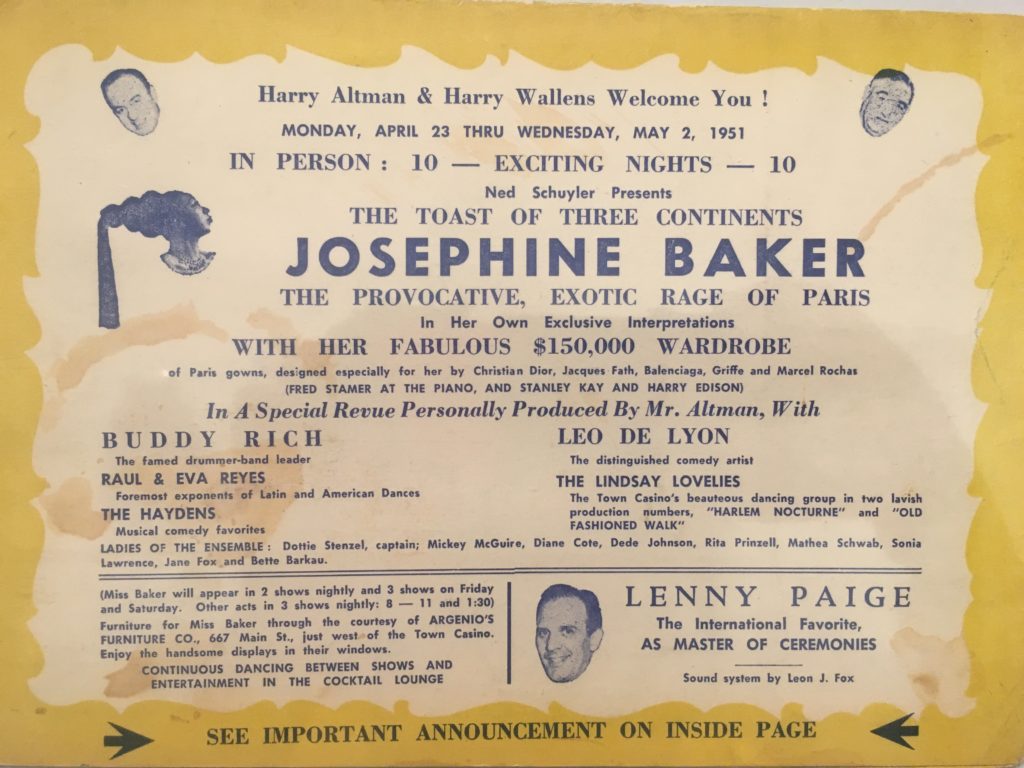
To its left, the Baker section is complemented by Lavaughan Jenkins’ sculpture that was inspired by Baker and does the opposite of what the aforementioned headline did. It regards her as a pioneer of Black women in the arts and her endurance amid the beasts of racism, prejudice, and sexism throughout her career. Created with globs and globs of paint, Baker’s face is without features, but she prominently stands against a wall in a tangerine orange strapless gown, with two onlookers, presumably young people, looking up at her, also presumably, in awe and curiosity.

“I’ve known Lavaughan for a while, and I saw this piece in its early stages on Instagram. He tagged it, ‘Valentino orange,’” Boyers said excitedly. “I knew this piece would be amazing to put in the show. So I sent him a picture of [Baker’s Cannes dress] and said, ‘I would love to put it next to this Josephine Baker thing.’ He said, ‘That’d be amazing! Because I was thinking of calling this piece, ‘Josephine Baker.’ How perfect is that! It’s one of my favorite moments in the show.”
Jenkins, affable, soft-spoken, and whose favorite painter is Francisco Goya, in a graphic tee starring Kiefer Sutherland as “David” in The Lost Boys, explicated that “Orange Valentino” is a part of his series that aims to translate as “tribute paintings to Black women in history.”
Looking for further inspiration beyond his beloved mom and aunt, he was in search of, “Figures that are iconic or maybe we’ve forgotten about, and I hope that anyone viewing my work will want to look them up.”
A supporter of women having a solid, visible place in the arts, whether as artists or muses, he gushed that, “Women have always been powerful. I love how it is today. Everything is so upfront. But we wouldn’t be able to do any of this stuff is it wasn’t for the women back then, such as Josephine Baker. I felt like this had to be made.”
A lot of attendees, observing his work, wondered where the name came from.
“In using fashion, [from the F/W 2018 collection] Valentino sent down the runway these amazing dresses and there was a model in an orange dress. Along with Balmain and Gucci, there were these notes to history, and yet it was so contemporary. That connection is how I got to be a part of this. Valentino Orange is a way to see how the inspiration of the painting came about.”
Pop culturally, one of the greatest finds for “Fashion Forward” is the preliminary cover art for the Worcester-based J. Geils Band’s 1973 album, Ladies Invited, illustrated by Antonio Lopez. The premier illustrator of 1970s fashion editorial, he’s also the subject of the documentary, Antonio Lopez 1970: Sex Fashion Disco. Boyers is thrilled that he is recognized in his gallery.
“It’s not exactly the same! But it was obviously towards the final result [of the album cover],” he commented, comparing the two images, while admirably looking Lopez’s way. “So we’ve got a little section for him.” Above Ladies Invited is a portrait of June Weir that Lopez drew in 1985.
What makes “Fashion Forward” a memorable experience is that it gives fashion, a field and medium that often has a reputation of being of niche interest, a platform to be acknowledged as historic and accessible. Beautiful drawings and outré art is always welcomed and ogled at. Here, from the funky, musical note boots of a J. Geils band-mate, to fairy wings circa 1895, it is all relative and reflective of the era these artworks, news clippings, and personal messages were generated, and the charge for progressive art and expression in both the subversive markets and in the mainstream.
